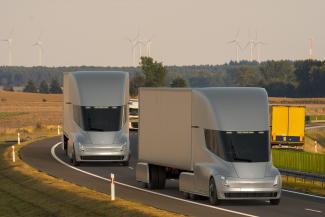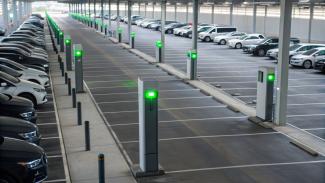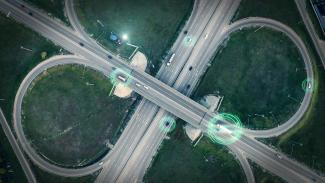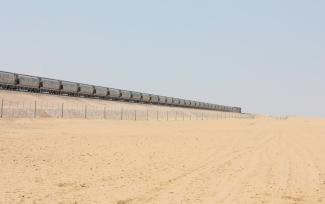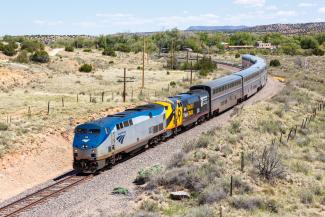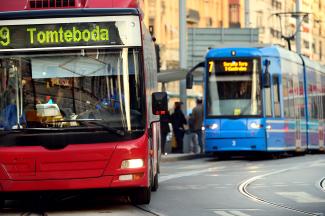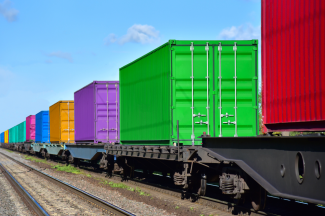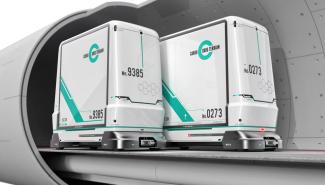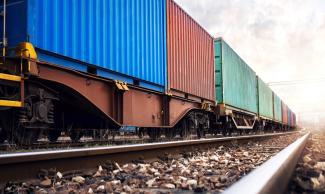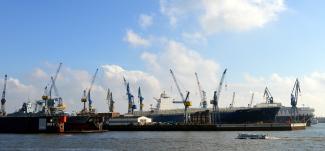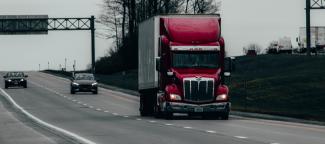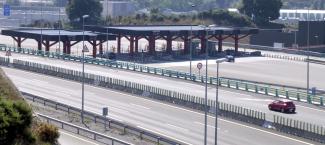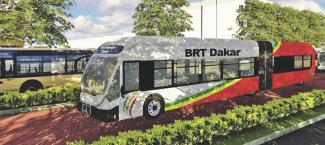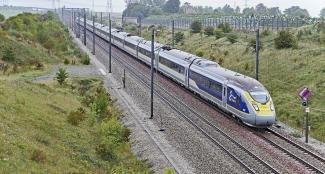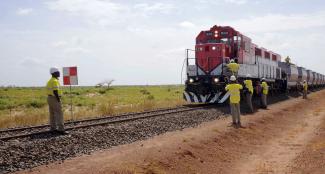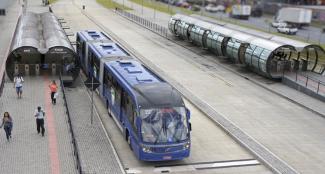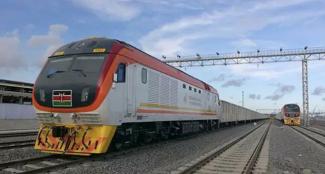The trucking sector is on the cusp of a major transformation driven by two technological revolutions: electrification and automation. As the global focus on sustainability and efficiency intensifies, manufacturers, regulators, and logistics companies must adapt to these emerging trends. This shift will not only reshape trucking operations but also redefine the entire transportation and logistics sector and influence broader infrastructure planning.
The inevitable shift to electrification
Driven by environmental concerns, regulatory mandates, and advancements in battery technology, electric trucks are emerging as a viable alternative to traditional diesel fleets. Despite regional variations in adoption rates, the global push toward decarbonization remains strong, forcing manufacturers and policymakers to accelerate the transition.
The electric truck market is expanding rapidly. In 2023, global sales grew by 35%, surpassing 50,000 units for the first time. While China continues to lead, accounting for 70% of global sales, its dominance has slightly declined from previous years. Europe is seeing strong growth, with sales tripling to over 10,000 units, supported by government incentives and emissions regulations. Meanwhile, the U.S. lags behind, though certain states -especially California- are pushing for faster adoption with aggressive zero-emission mandates.
Despite progress, the widespread adoption of electric trucks depends on overcoming four key challenges:
- Charging infrastructure: Europe will need over 3.5 million charging points by 2030, a significant increase from the current 630k. In turn, the U.S. will require 28 million charging ports to support projected demand.
- Battery range and efficiency: Long-haul trucking remains a challenge, though improvements in battery density and charging speeds are making electric freight more feasible.
- High upfront costs: While operational savings exist, the initial investment in electric trucks and infrastructure remains a barrier.
- Regulatory push: Government leadership is crucial for a zero-pollution policy transition of the sector. Although this push has been weakened lately due to the geopolitical context and sector progress (both manufacturers and transportation companies), regulatory pressure and inertia are still very strong continuing to push the sector forward.
To this end, governments worldwide are implementing stricter emission standards to accelerate the transition. Some examples include the European Union aiming for a 45% cut by 2030 and a 90% reduction by 2040 for heavy-duty vehicles. While the U.S. does not follow Europe's environmental policies as closely, efforts are still underway, suggesting that a gradual convergence in emission policies over the medium to long term should be expected. In this regard, the U.S. Environmental Protection Agency (EPA) has proposed regulations requiring substantial emission reductions by 2032 with California also mandating 100% zero-emission truck sales by 2045.
While battery-electric trucks dominate the market, hydrogen fuel cell trucks are also being explored as an alternative for long-haul routes where frequent charging is impractical. Offering longer ranges and faster refueling times, hydrogen is attracting investments from manufacturers like Daimler and Volvo. However, significant barriers remain. Green hydrogen production is highly energy-intensive, requiring three times more energy than charging a battery-electric truck. Additionally, hydrogen refueling infrastructure is severely underdeveloped, with high costs and limited availability slowing adoption. As a result, battery-electric trucks are expected to dominate the sector.
The acceleration of autonomous vehicles
Autonomous vehicle technology promises increased efficiency, reduced costs, and improved safety. While development varies by region, companies worldwide are investing in self-driving systems, with pilot programs and regulatory advancements set to shape the next steps of autonomous freight transport.
The United States is at the forefront of AV adoption, driven by its regulatory flexibility and the shortfall of drivers (currently over 100,000 drivers, and it could reach 160,000 by 2028).
- As of early 2025, the regulation of autonomous trucks remains fragmented given the lack of a comprehensive federal framework and differing state policies. To tackle the challenge of inconsistent regulations, the U.S. Federal Motor Carrier Safety Administration (FMCSA) has announced plans to propose standards for self-driving commercial vehicles, marking a preliminary step toward federal regulation. This proposal is anticipated to address critical issues such as training, certification, and safety protocols for operators of autonomous trucks.
- To meet demand, the industry must hire one million drivers over the next decade, but younger generations are reluctant to enter the profession due to long schedules and time away from home. Autonomous trucks present a viable solution, addressing labor shortages while improving logistics efficiency. States like Texas, Arizona, and California are at the forefront, enabling extensive testing and pilot programs. Companies like Aurora, Waymo, and TuSimple are leading the tests and developments, while Tesla has announced autonomous capabilities for its electric Semi, further advancing the industry’s shift towards automation.
In contrast, Europe faces greater resistance to AV adoption, largely due to strong labor unions, complex regulations, and public skepticism. Trucking jobs are more protected in Europe, with unions pushing back against automation to safeguard employment. Governments are also prone to imposing strict safety and operational regulations, slowing large-scale deployment. While countries like Germany and Sweden are leading research efforts focused on the development of dedicated autonomous freight corridors through companies like Scania and MAN, adoption remains cautious. Public trust is another key challenge, as skepticism about AV reliability and safety remains high among policymakers.

New business models and market players
The rise of autonomous and electric trucks is set to redefine the sector's competitive landscape. As automation is anticipated to lower operating costs and increase efficiency, new business models will emerge, with digital freight platforms playing a central role. Like how ride-hailing services disrupted passenger transport, "truck-as-a-service" freight-matching platforms are set to revolutionize the logistics and supply chain sector by optimizing load utilization and enabling more dynamic scheduling.
Autonomation will likely lead to the creation of new logistics ecosystems where technology firms, startups, and traditional trucking companies compete to control key parts of the supply chain. Startups specializing in autonomous software, telematics, and AI-driven logistics management will continue to gain traction, while established providers are building partnerships to stay ahead in an increasingly tech-driven and competitive industry.
Supply chain transformation and infrastructure implications
The logistics sector and associated supply chains will undergo significant transformation as autonomous trucks reach higher levels of automation. Initially, these vehicles are expected to operate primarily on long-distance routes between consolidation centers. To facilitate this, the development of dedicated infrastructure, such as segregated lanes for autonomous trucks, is a strong possibility. This would allow autonomous trucks to operate without interference from conventional traffic, improving efficiency and safety. In this regard, the installation of intelligent highways is under development, including the deployment of vehicle-to-infrastructure (V2I) systems which shall contribute to the integration of autonomous logistics into existing transportation networks.
Another key innovation under development is truck platooning, where multiple autonomous trucks travel in coordinated convoys. This technology could significantly enhance road capacity, reduce fuel consumption, and optimize infrastructure usage by maintaining constant speeds.
As automation advances, autonomous trucks will increasingly share roads with human-driven vehicles, eventually extending their role to first-mile and last-mile deliveries, achieving a fully integrated transportation solution.
Beyond infrastructure, autonomous trucks will revolutionize supply chain management by offering greater flexibility in scheduling. AI-driven fleet management systems will enable real-time responsiveness to demand fluctuations, allowing for dynamic routing and just-in-time deliveries. These advancements will also increase available driving hours, ensuring faster freight movement and more resilient supply chains.
The economic impact is equally significant. Projections indicate a potential per-mile cost decrease of over 30% compared to traditional trucking, achieved through reduced labor costs, extended driving hours, improved fuel efficiency, and enhanced safety. Additionally, autonomous freight transport is expected to optimize load management, reducing the number of empty trucks on the road, which in turn shall alleviate congestion.
Autonomous trucks also have the potential to streamline intermodal operations by improving efficiency in truck-to-rail operations. Real-time synchronization with rail schedules will minimize dwell times at terminals, ensuring seamless cargo transfers. Advancements will also optimize loading and unloading procedures, making rail freight more competitive and cost-effective.
In rolling highway services, autonomous technology will further enhance efficiency, since freight will continue moving immediately upon arrival at the rail terminal, eliminating delays caused by driver availability. This will contribute to a more integrated and reliable multimodal logistics network.
Electric and autonomous trucking: key takeaways for the road ahead
As the trucking sector undergoes a deep transformation driven by electrification and automation, businesses and policymakers must adopt a proactive approach to tackle this evolving landscape. The convergence of these technologies presents both major opportunities and complex challenges, requiring strategic planning to ensure a smooth transition.

For businesses, adapting to electrification means investing in fleet modernization and charging infrastructure. Companies must also prepare for the impact of autonomous trucks on workforce planning and supply chain operations. Leveraging digital freight platforms and AI-driven fleet management systems will be crucial for maintaining efficiency and staying competitive in an increasingly dynamic industry.
The road ahead demands collaboration among industry leaders, governments, and technology providers. While autonomous and electric trucks promise increased efficiency, cost savings, and sustainability, their success depends on well-coordinated policies and long-term infrastructure investments.

